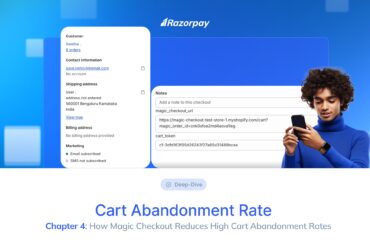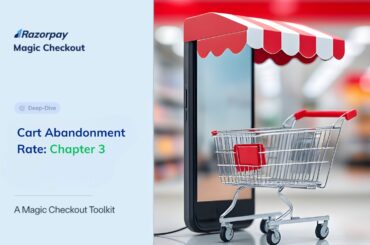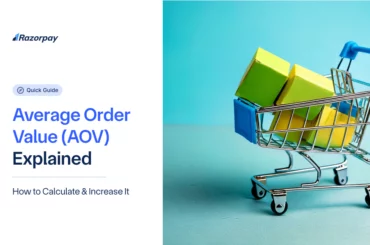In the digital world, the terms “e-commerce” and “e-business” are often used interchangeably. However, while they are related concepts, there are key differences between e-commerce and e-business that are important to understand. In this article, we will explore the nuances that differentiate e-commerce and e-business, their scope, the types of transactions involved, and the technologies used in each.
Table of Contents
Difference between E-Commerce and E-Business: Detailed Comparison
To distinguish between e-commerce and e-business, let’s look at a detailed comparison:
Aspect |
E-Commerce |
E-Business |
|---|---|---|
|
Definition |
Buying and selling of goods and services online |
All business activities conducted over the internet |
|
Scope |
Narrower focuses on online transactions |
Broader includes e-commerce and other processes |
|
Focus |
Limited to commercial transactions |
Involves all types of business transactions |
|
Main Activities |
Buying and selling products online, online payments and accounting, online ticketing, online customer support. |
E-commerce activities plus procurement, supply chain management, customer education, email marketing, and connecting internal business processes. |
|
Examples |
Amazon |
Auction and classified sites, software and hardware developer sites, etc. |
|
Technology |
Primarily requires a website |
Uses multiple tools like websites, CRM, ERP |
|
Context |
More relevant for B2C businesses |
More relevant for B2B businesses |
E-Business encompasses e-commerce but also includes a wider range of business processes conducted online such as procurement, supply chain management, and customer service. B2B e-commerce, which involves transactions between businesses, is a key component of e-business.
Understanding E-Commerce
E-commerce, short for electronic commerce, refers to the buying and selling of goods and services over the Internet. Some key characteristics of e-commerce include:
-
24/7 availability for customers to shop from anywhere
-
A wide selection of products available online
-
Ability to reach international markets
-
Collection of valuable customer data for personalization
-
Potentially lower operational costs than physical stores
There are several types of e-commerce:
-
B2C E-commerce – Businesses selling directly to consumers
-
B2B E-commerce – Transactions between businesses
-
C2C – Transactions between individuals via a third-party site
-
C2B – Individuals selling goods or services to businesses
E-commerce Payment Systems are critical for enabling online transactions. Some common types of E-commerce Payments include:
-
Credit/debit cards
-
Digital wallets like PayPal or Apple Pay
-
Bank transfers
-
Online ticketing
-
Online customer support
-
Buying and selling products online
Each ECOM Transaction involves the exchange of payment information securely between the customer, merchant, and payment processor. E-commerce marketplaces like Amazon, eBay, Myntra, and Flipkart provide a platform for multiple sellers and have become very popular.
Related Read: What Is C2B eCommerce?
Understanding E-Business
E-Business refers to the use of Internet technologies to streamline and integrate business processes across an organization. Some key aspects of e-business include:
-
Online sales and marketing
-
Supply chain management
-
Customer relationship management
-
Knowledge management
-
Human resources and recruitment
-
Collaboration with business partners
E-business relies on several digital tools and platforms:
-
Websites and mobile apps for various functions
-
Enterprise resource planning (ERP) systems to manage business processes
-
Customer relationship management (CRM) software
-
Content management systems
-
Email marketing
-
Customer education
-
Electronic data interchange (EDI) for exchanging documents with suppliers
By integrating these systems, companies can automate processes, centralize data, and gain efficiencies. For example, linking inventory management to the E-Commerce Marketplaces ensures stock levels are updated in real-time.
E-commerce marketing is another important aspect of e-business. Digital marketing tactics are used to drive traffic to online stores, including:
-
Search engine optimization (SEO)
-
Pay-per-click (PPC) advertising
-
Email marketing
-
Social media marketing
-
Content marketing
Choosing the right Payment Solution is also critical for e-business. Payment gateways securely process transactions and integrate with other business systems.
Conclusion
While e-commerce focuses on online transactions and customer-facing activities, e-business encompasses a broader spectrum of business processes conducted electronically. E-Commerce is a subset of E-Business, with the latter offering a more comprehensive approach to leveraging digital technologies for business success.
Understanding the difference between e-commerce and e-business is crucial for organizations looking to optimize their online presence and operations. By recognizing the distinct characteristics and implications of each concept, businesses can make informed decisions and develop effective strategies to thrive in the digital age.
Related Read: What Is C2C E-Commerce?
Frequently Asked Questions (FAQs):
1. What types of transactions are associated with e-commerce and e-business?
E-commerce primarily involves commercial transactions like buying and selling products or services online. E-business includes e-commerce transactions but also encompasses other types of business exchanges like sharing data with suppliers, processing employee information, and managing customer interactions.
2. What are the limitations of e-commerce compared to e-business?
E-commerce is more limited in scope than e-business, as it focuses on online selling. It may have challenges in areas like:
-
Lack of in-person customer interaction
-
Dependence on reliable shipping
-
Difficulties in selling certain products online
-
Intense price competition
E-business is broader and aims to streamline processes across the organization to overcome some of these limitations.
3. Which business model is suitable for e-commerce and e-business?
B2C E-commerce, or business-to-consumer e-commerce, is a common model for online retail. Businesses sell products directly to individual customers via a website or app.
B2B E-commerce involves online transactions between businesses, such as a manufacturer selling to a wholesaler. This is a significant component of e-business.
Other models include C2C (consumer-to-consumer), C2B (consumer-to-business) and B2G (business-to-government). The best model depends on the nature of the business.
4. How are e-commerce and e-business evolving in the business world?
E-commerce and e-business continue to grow and change rapidly. Some key trends include:
-
Growth of mobile commerce
-
Expansion of E-Commerce Marketplaces
-
Increased personalization using customer data
-
Adoption of new E-commerce Payment Systems like digital wallets
-
Use of artificial intelligence for functions like customer service
-
Integration of online and offline experiences
Businesses must continually adapt their e-commerce and e-business strategies to keep pace with evolving technologies and changing customer expectations.
5. Is E-Business the same as E-Commerce?
No, e-business and e-commerce are not the same, although e-commerce is a component of e-business. E-business refers to all business activities conducted over the Internet, while e-commerce specifically relates to online transactions of buying and selling.
6. Can E-Commerce be considered a part of E-Business?
Yes, e-commerce is a subset of e-business. E-Business encompasses e-commerce transactions but also includes many other processes like online marketing, vendor management, customer service, and employee collaboration.
7. What activities are involved in E-Commerce?
E-commerce involves activities related to online transactions, such as:
-
Displaying products on a website or app
-
Processing orders and payments
-
Managing inventory
-
Arranging shipping and delivery
-
Handling returns and refunds
-
Providing customer service
E-commerce marketing tactics are used to attract customers and encourage purchases.
8. What are the main functions of E-Business?
The main functions of e-business include:
-
Buying and selling products or services (e-commerce)
-
Communicating with customers, partners, and employees
-
Managing supply chain and logistics
-
Processing financial transactions
-
Gathering and analyzing business data
-
Collaborating on projects
-
Providing information and support
E-business aims to digitize and integrate all aspects of business operations.
9. What technologies are used in E-Commerce and E-Business?
E-commerce and e-business rely on a variety of digital technologies, including:
-
Websites and mobile apps
-
E-commerce Payment Systems and gateways
-
Shopping cart and checkout software
-
Inventory and order management systems
-
Customer relationship management (CRM) platforms
-
Enterprise resource planning (ERP) systems
-
Supply chain management tools
-
Marketing automation software
-
Analytics and reporting tools
The specific technologies used will depend on the needs and complexity of the business.



